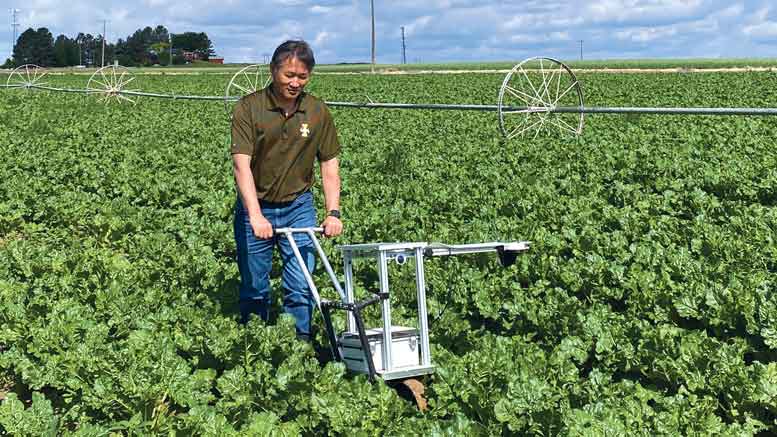|
Click to listen to this article
|
University of Idaho Researchers Helping Develop Solar-Powered Weeding Robot
Researchers from the University of Idaho are partnering with a Washington company to develop a solar-powered robot that will rove autonomously through fields and eradicate weeds. Jae Ryu, an associate professor in the Department of Soil and Water Systems, and Jerry Neufeld, an Extension crops educator, are collecting data in Idaho farm fields to help the robot differentiate between weeds and two of the state’s major crops: onions and sugar beets.
The company behind the project, Aigen, based in Kirkland, Washington, hopes to have a prototype of the robot finished by late summer. It will be adapted for use in other crops later. The wheeled robot will roll between rows in farm fields before crop canopies close. A small arm will grasp and pull small weeds; the robot will emit an electric shock to fry the larger weeds.
“They’re trying to make it as small as possible and light as possible so one person could lift it up and put it in the back of a pickup,” Neufeld said.
Ryu said the robots could provide an answer to farmers who have been unable to find enough field workers for tasks such as weeding. He believes new technology will play an increasingly important role in addressing the farm labor shortage. In the near future, he expects drones will be spraying fields now treated by crop duster pilots.
“Maybe over the next few decades, we’re going to see a lot of this kind of autonomous vehicle everywhere,” Ryu said. “Technology is improving so fast these days. We have to accept this technology to make our life easier.”
Ryu said the robot could also fill a niche by providing weed control on organic farms.
“This is also very beneficial for environmental ecosystems,” Ryu said. “Farmers are going to reduce their chemical applications.”
Since April, Ryu and Neufeld have gone into onion and sugar beet fields every five days, weather permitting, to take photos of weeds. They manually push a cart fitted with an accelerometer to take two photographs of the ground per second while the cart is in motion. Aigen uploads the photos to build the database the robot will use to tell the difference between weeds and crops.
The researchers are uncertain how much each robot unit will cost to build or how much ground an individual robot will be capable of covering in a set amount of time.
Ryu has applied for a grant to fund development of a similar autonomous robot that would take the field photographs in lieu of manually pushing a cart. If the grant is funded, that robot could also be used for some of his additional research involving drones. One of those projects entails flying a drone with multispectral sensors to detect the presence of wireworms in wheat fields. Ryu has also researched using multispectral sensors to identify early symptoms of pink root disease in onions.

